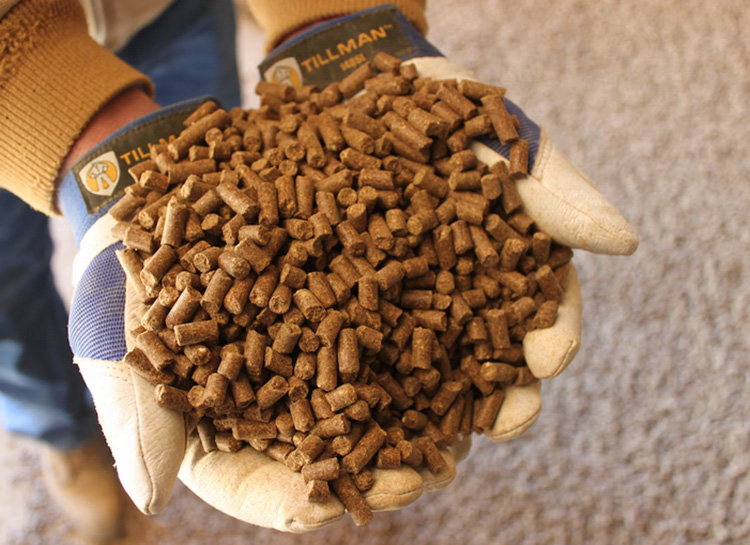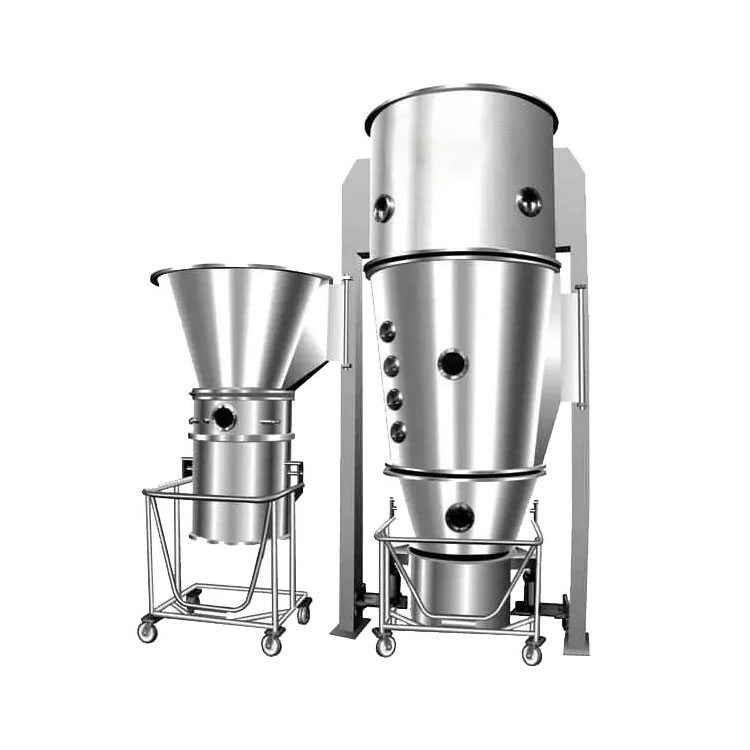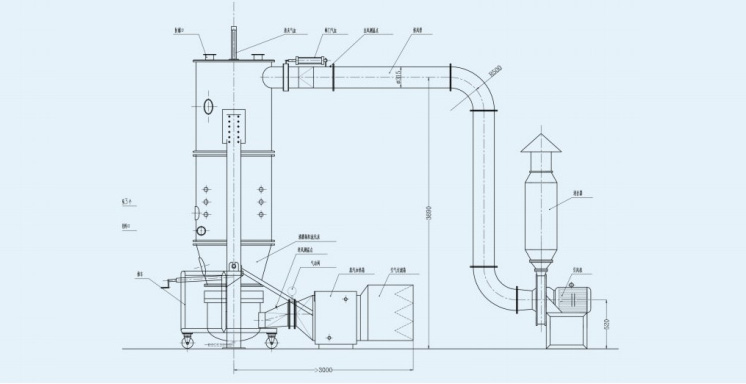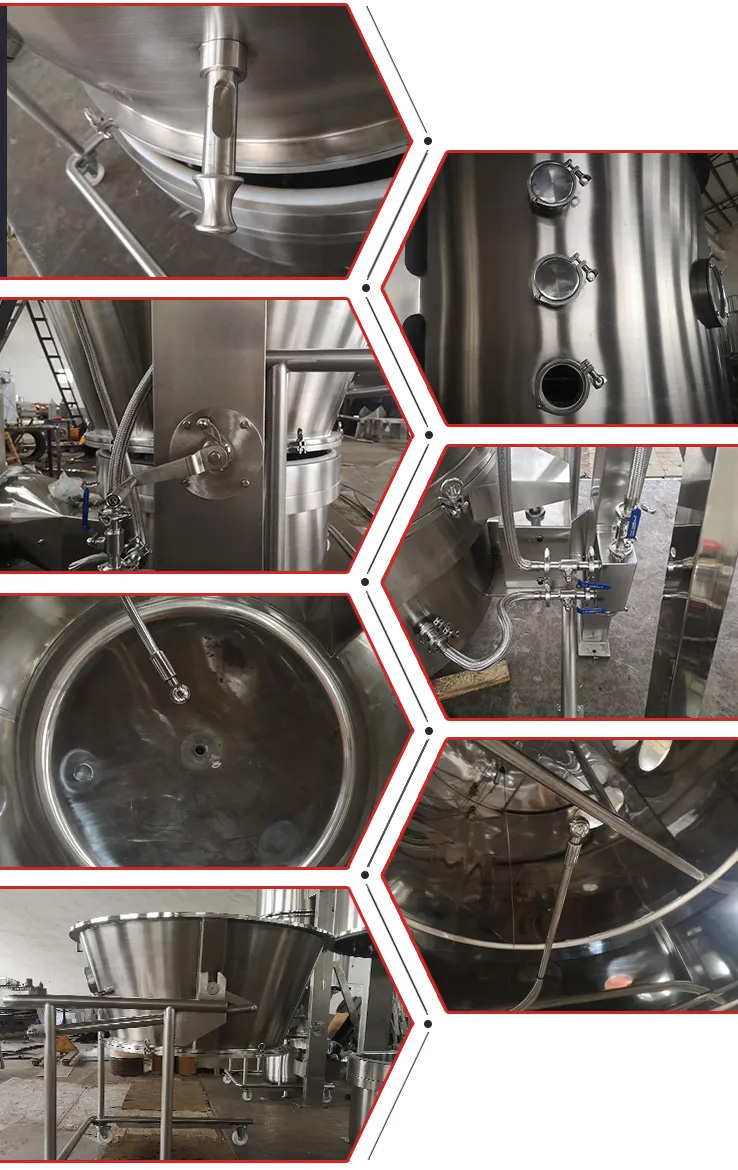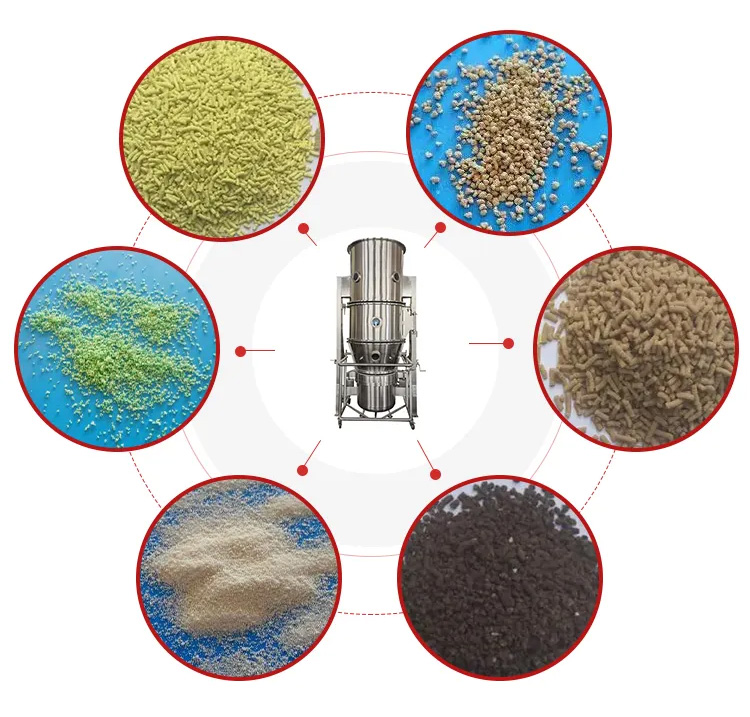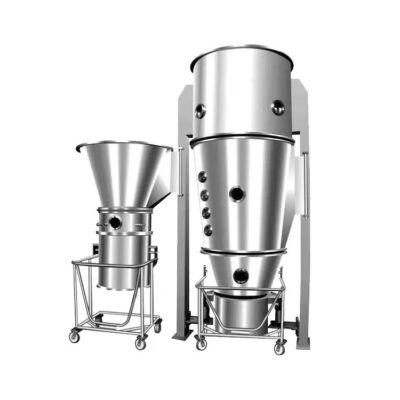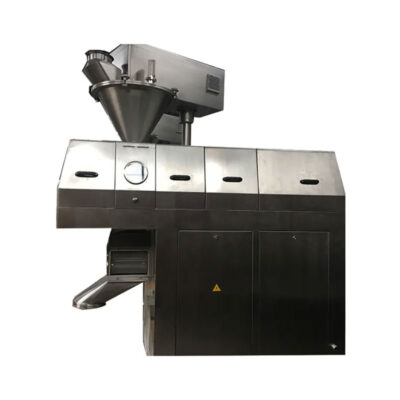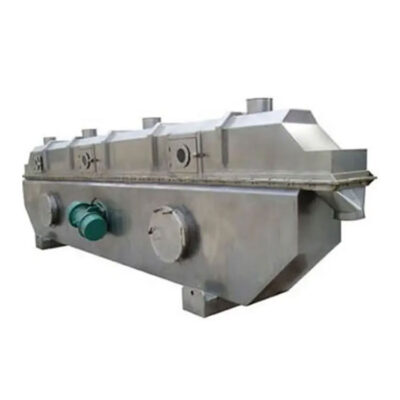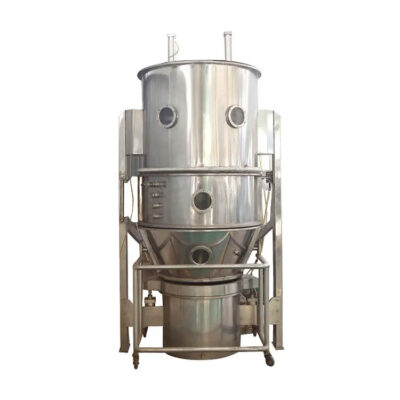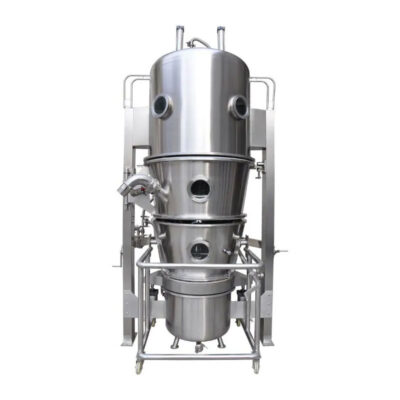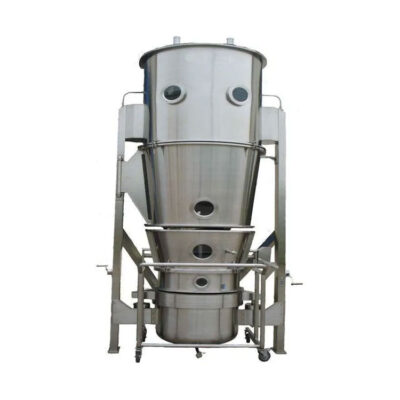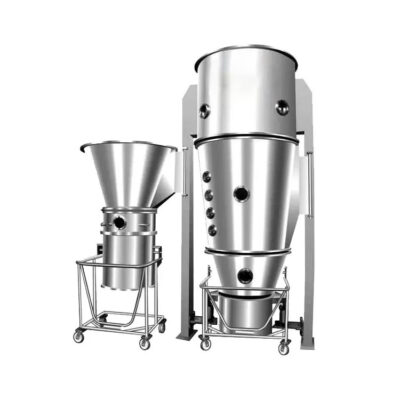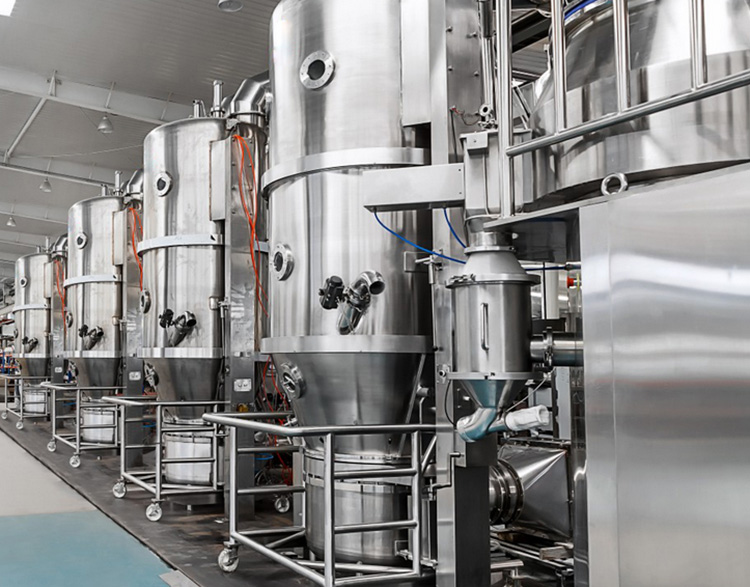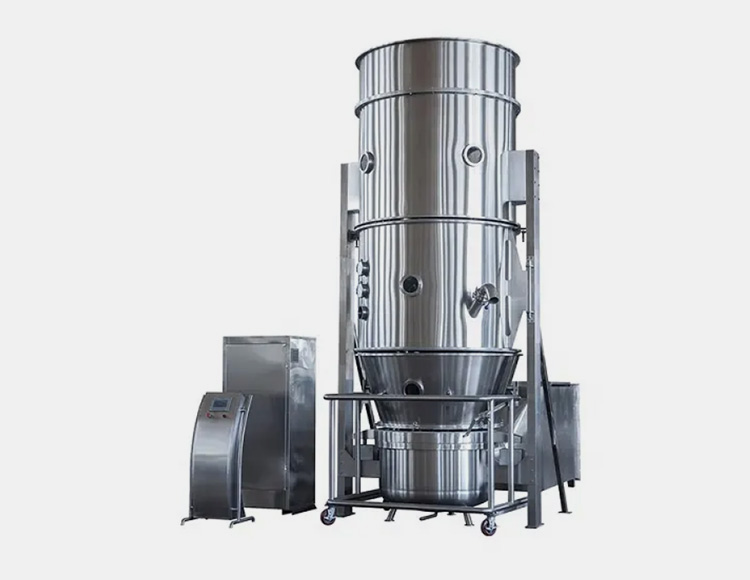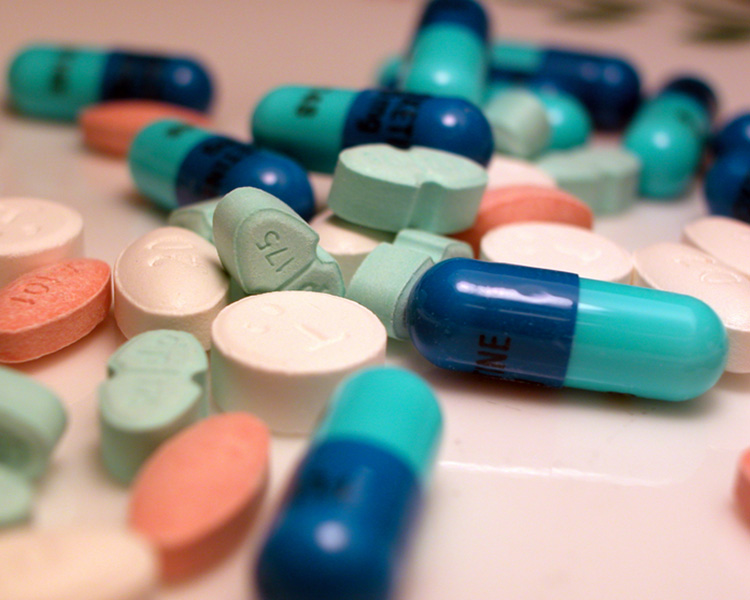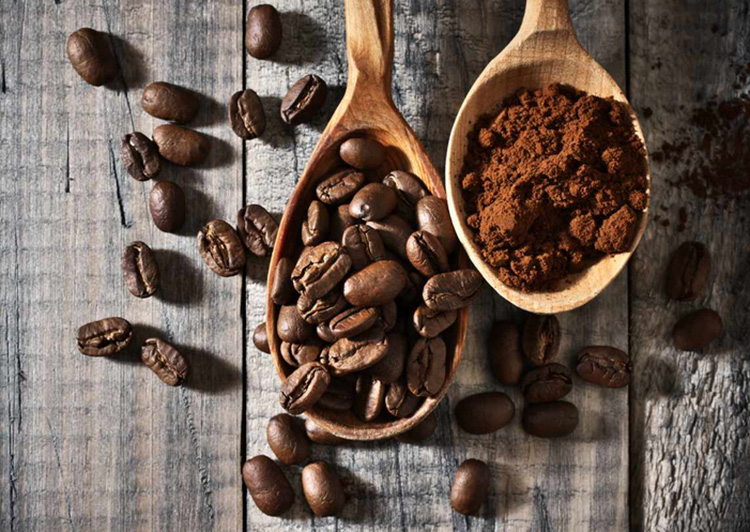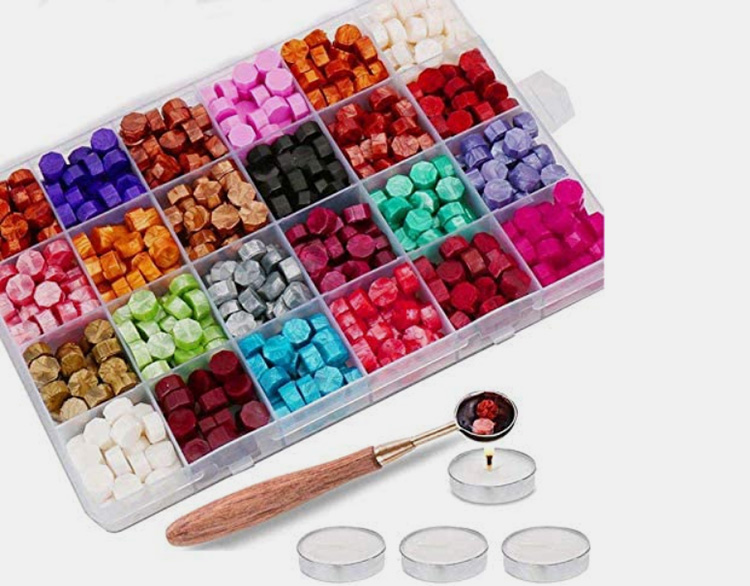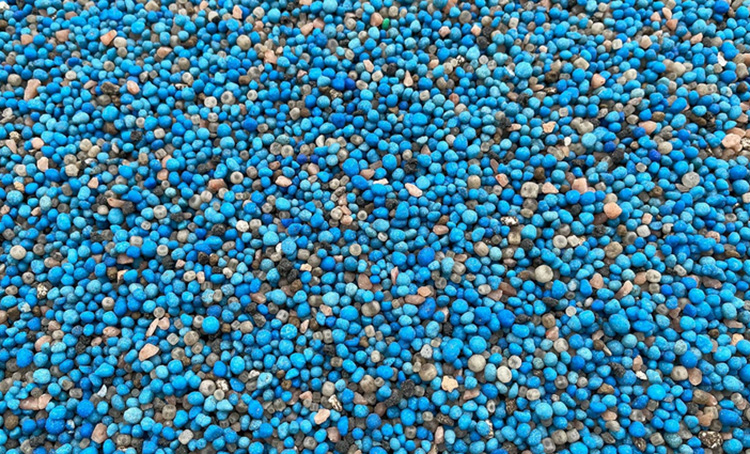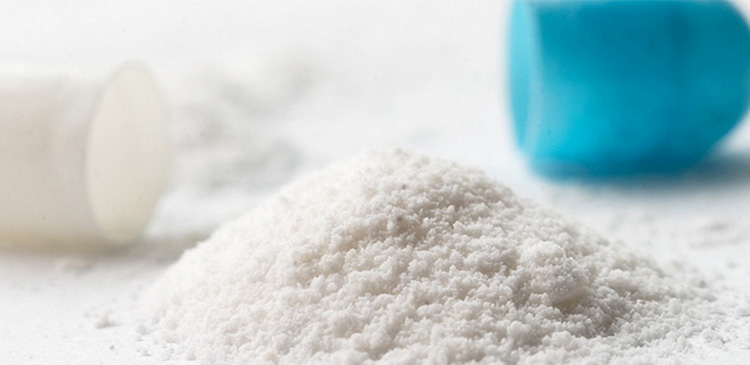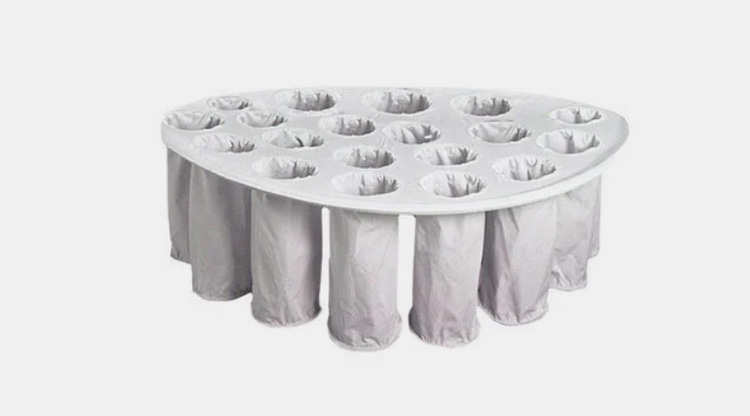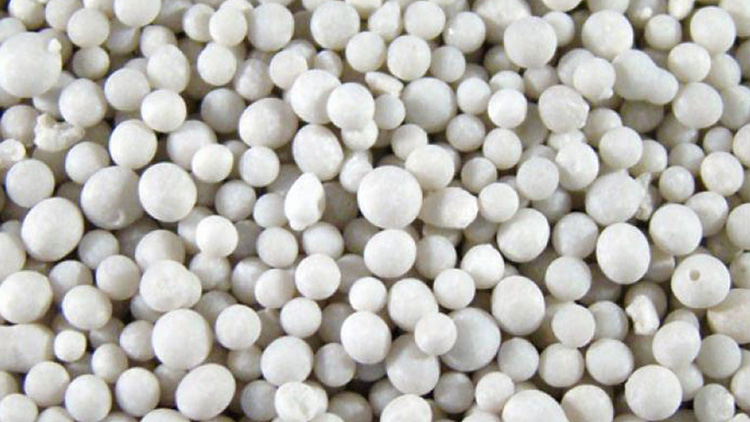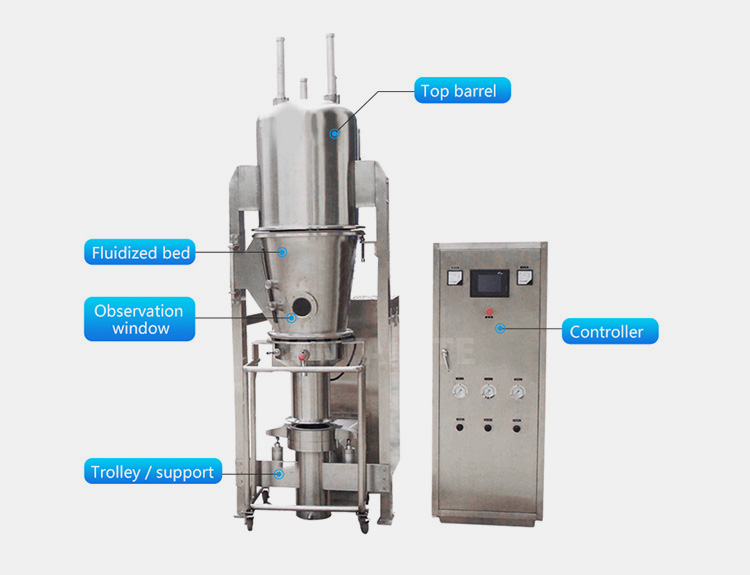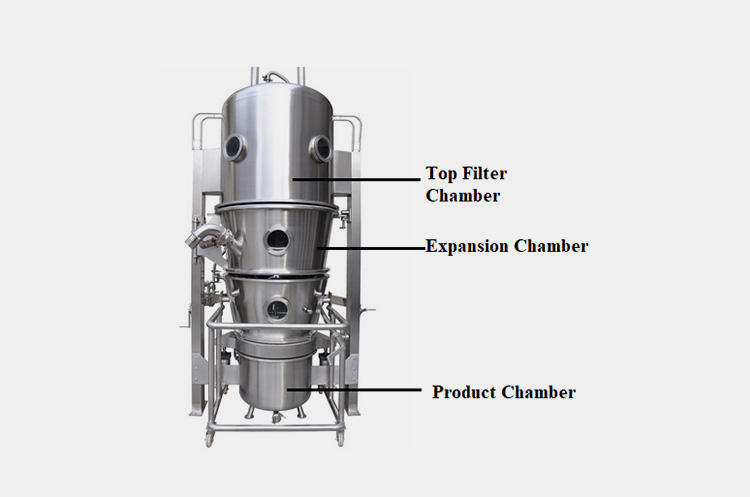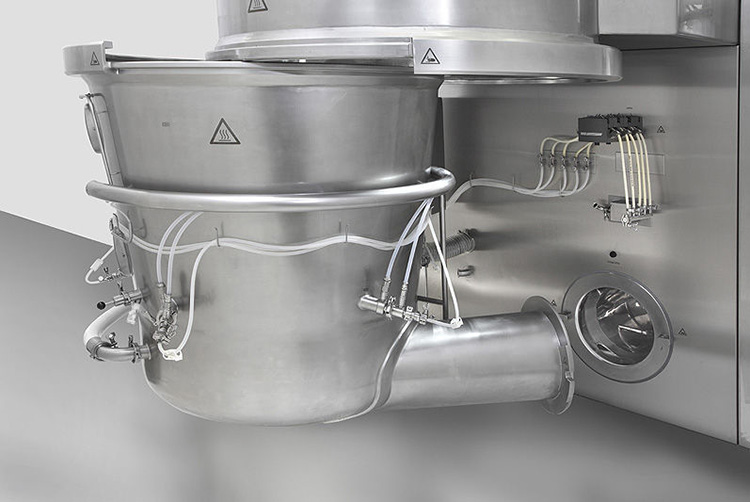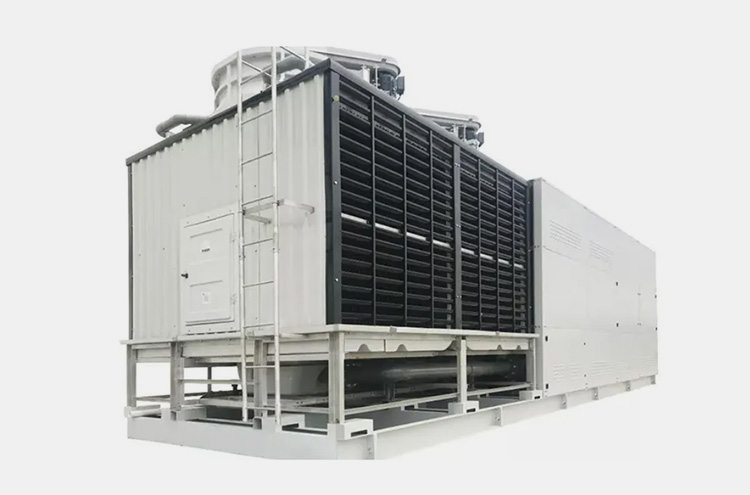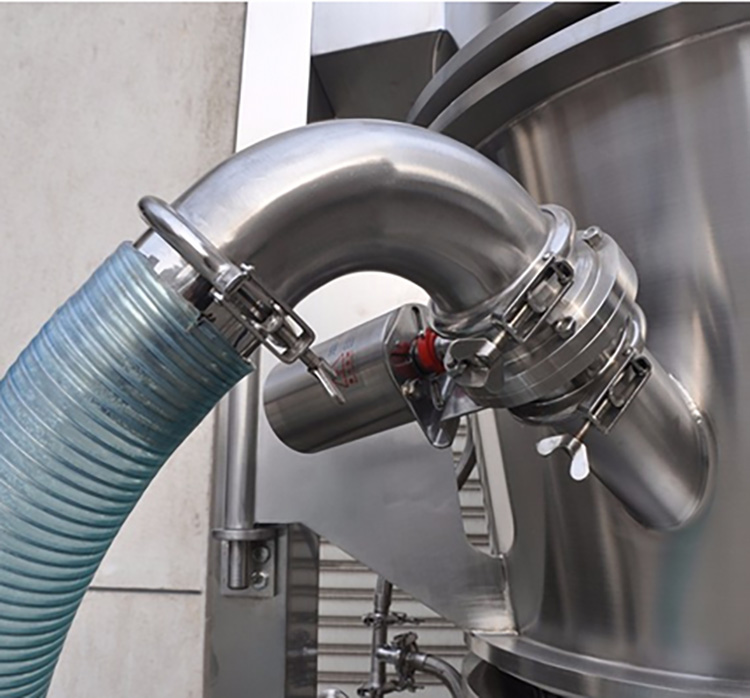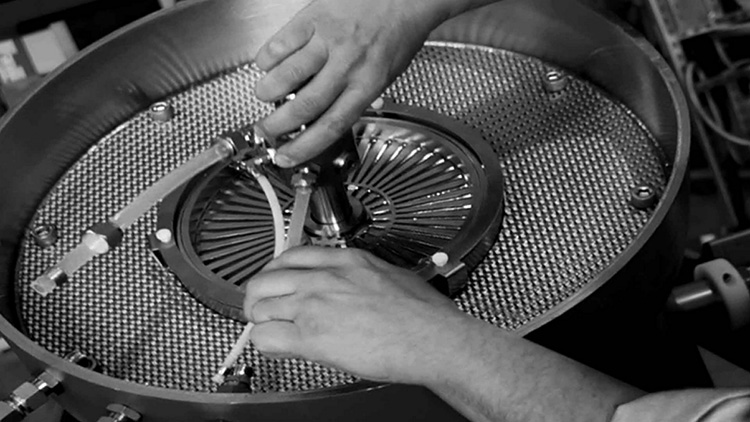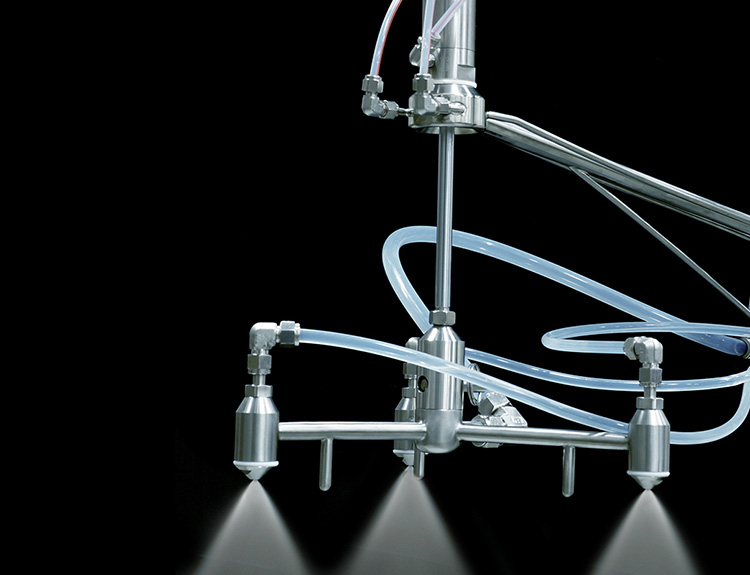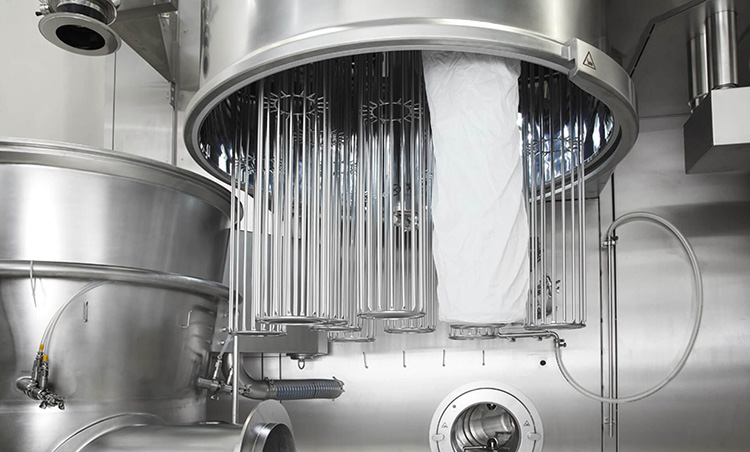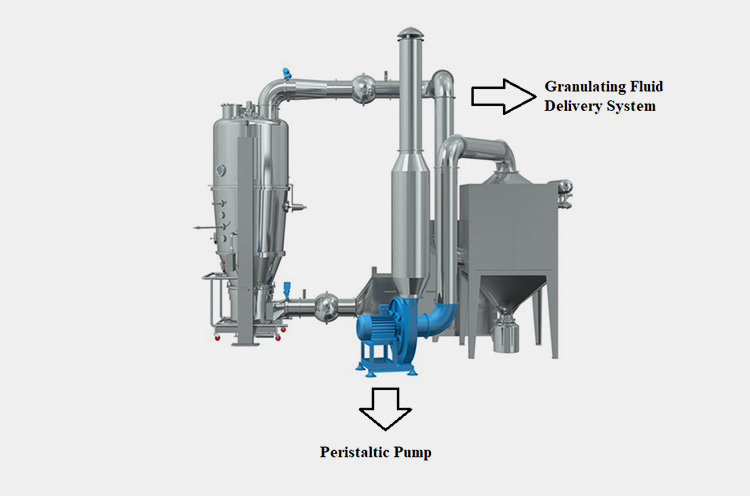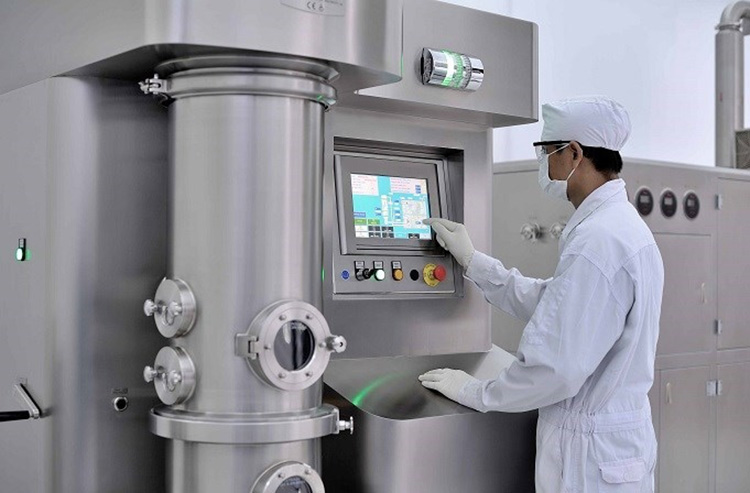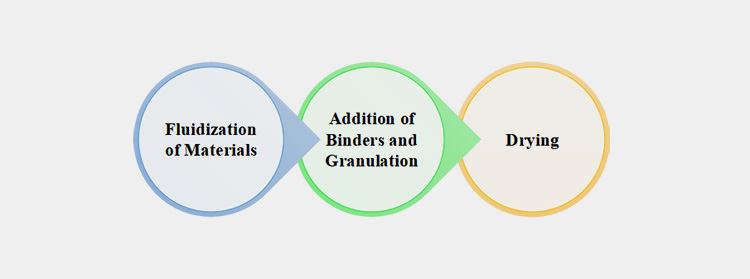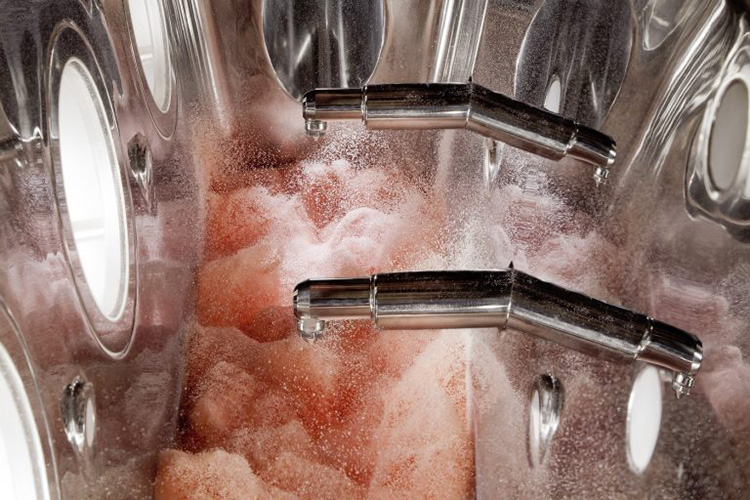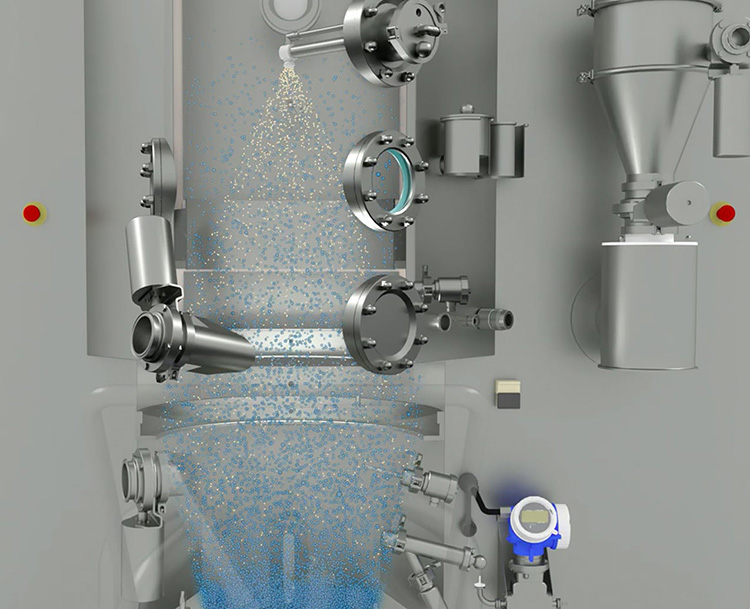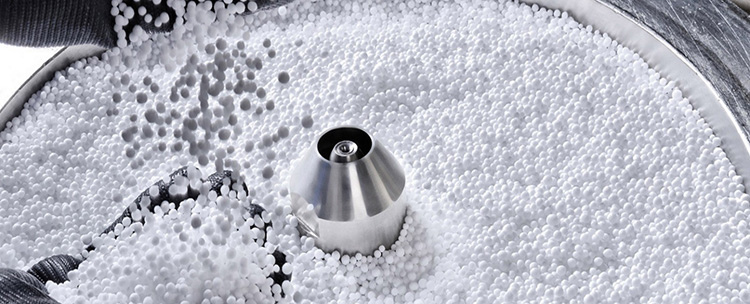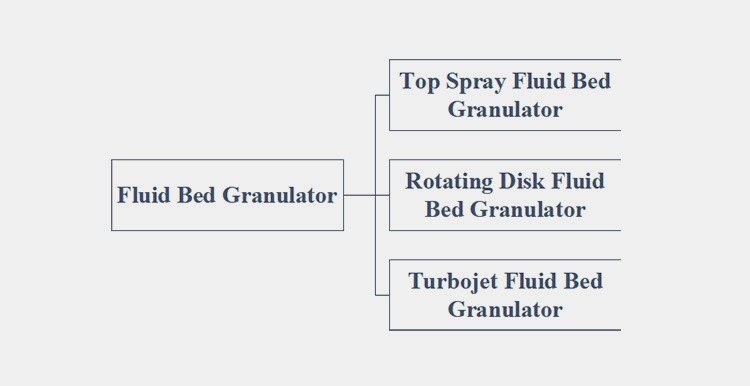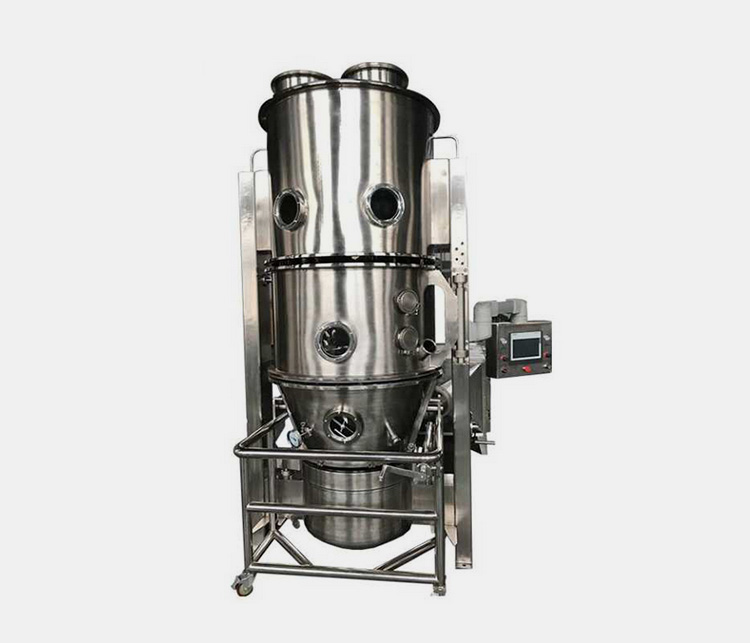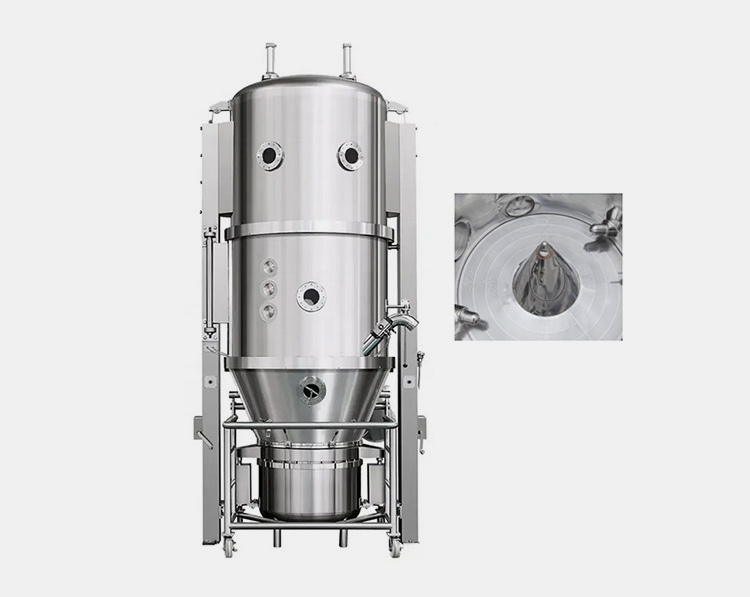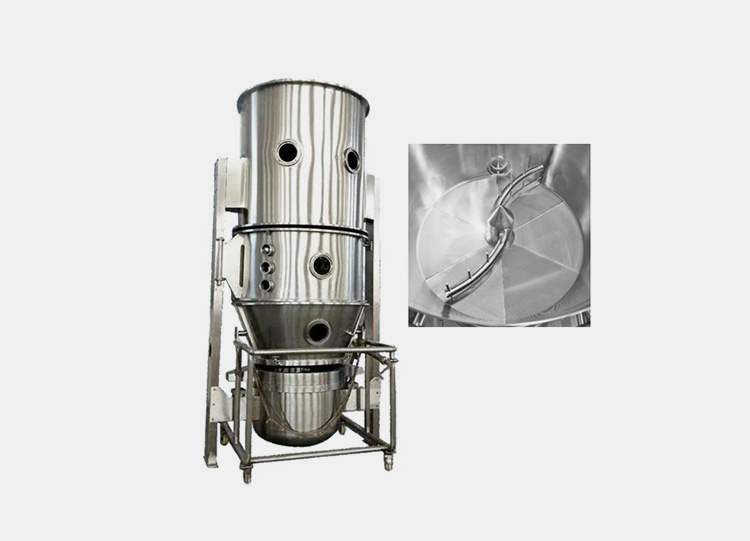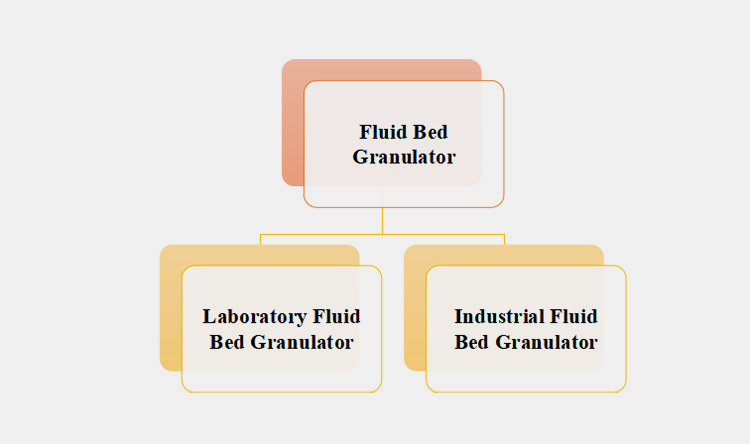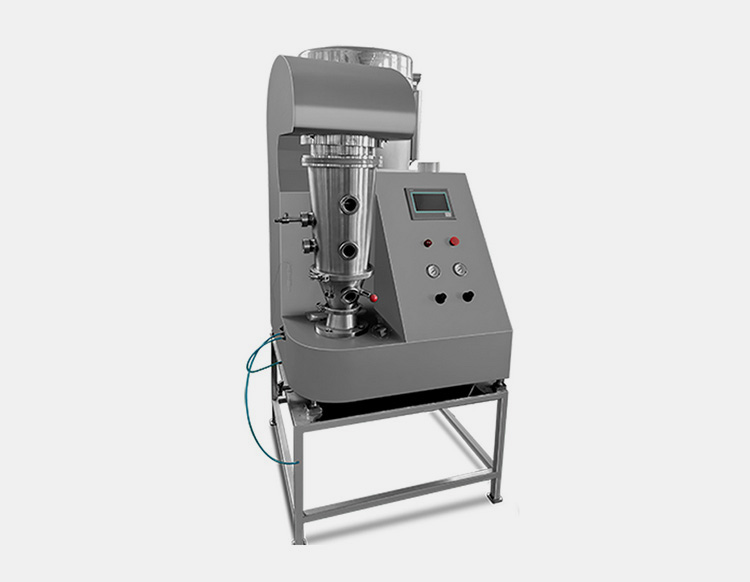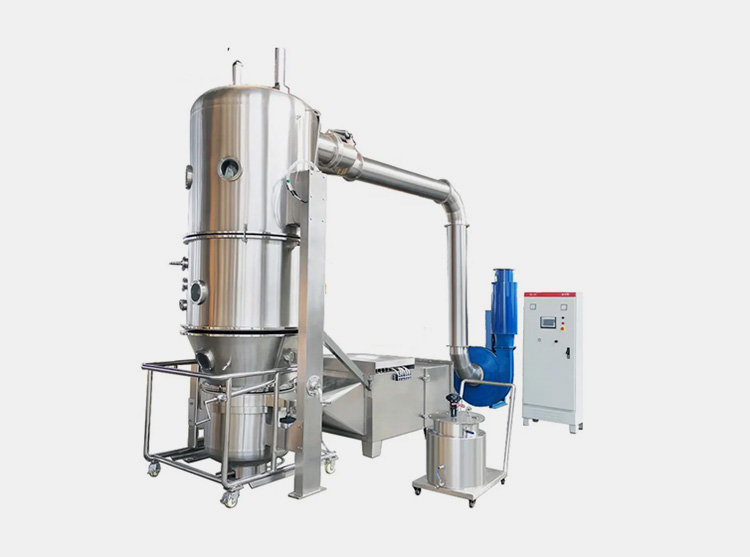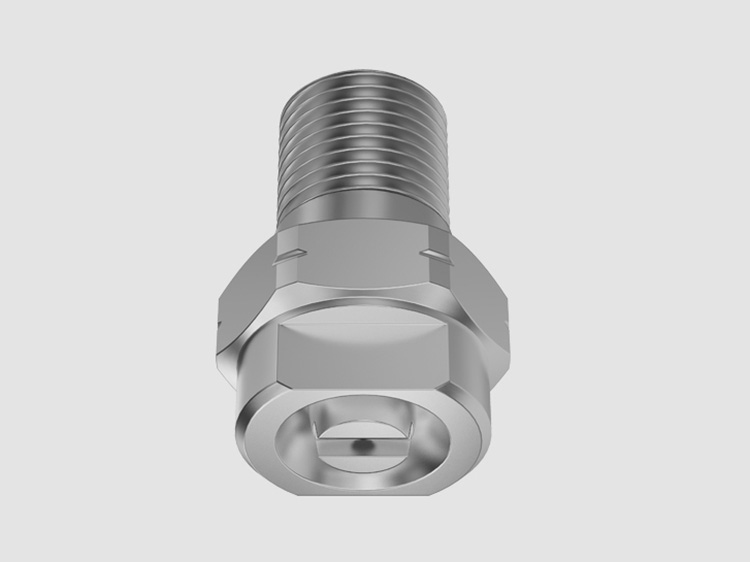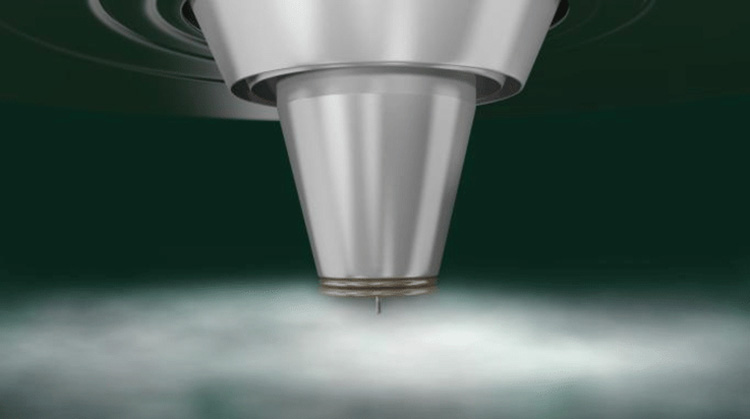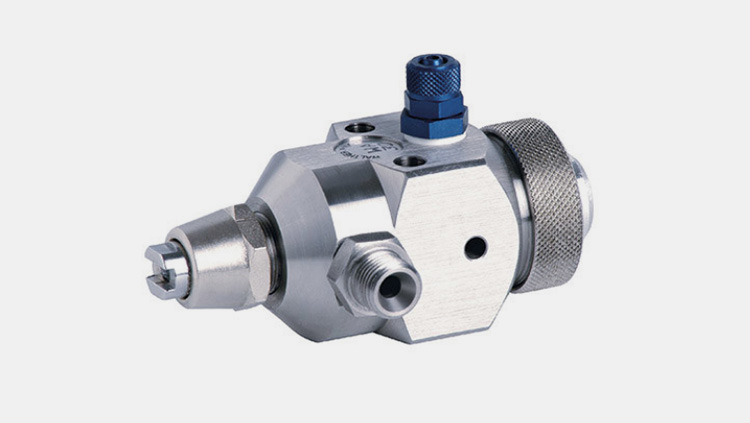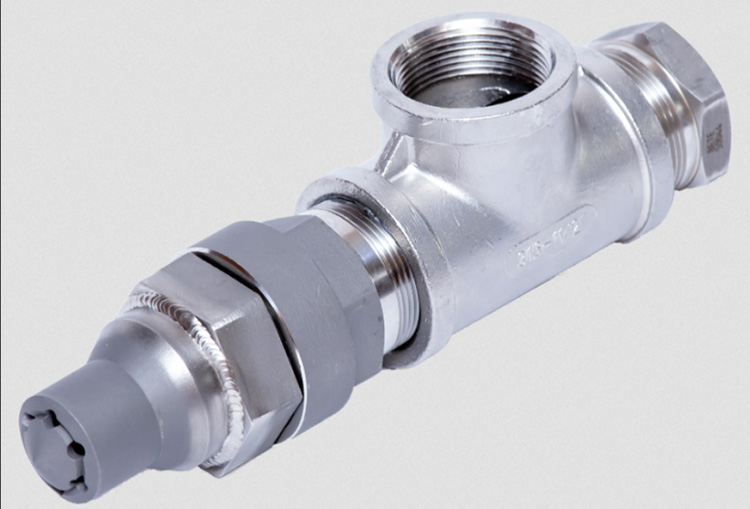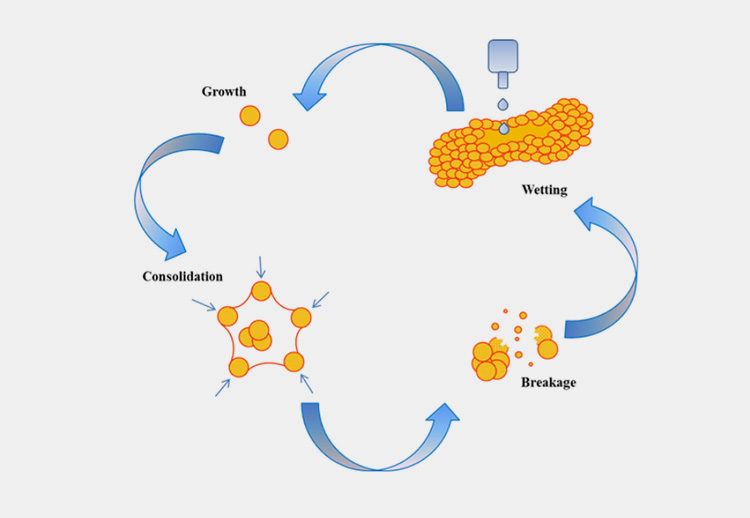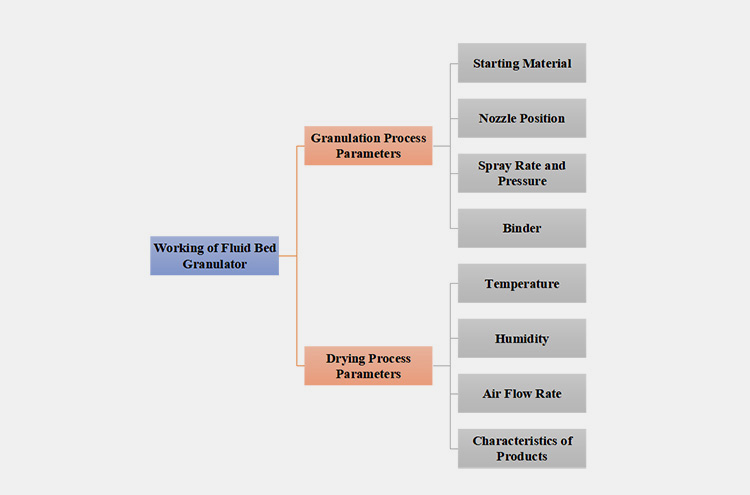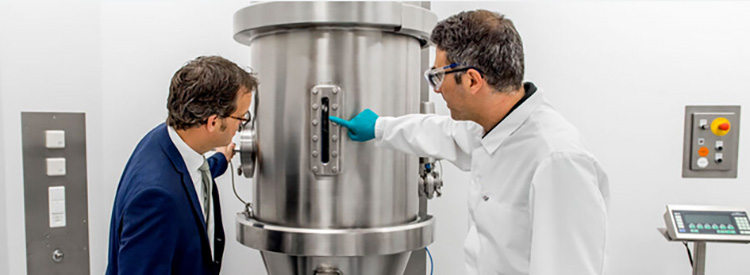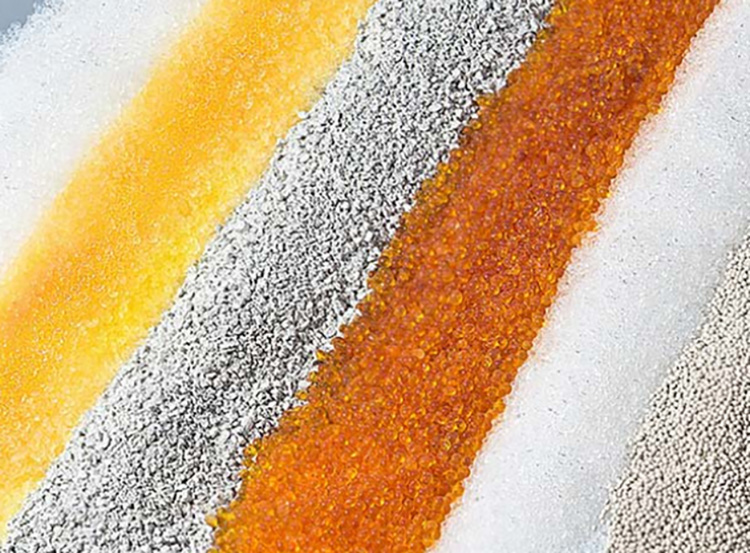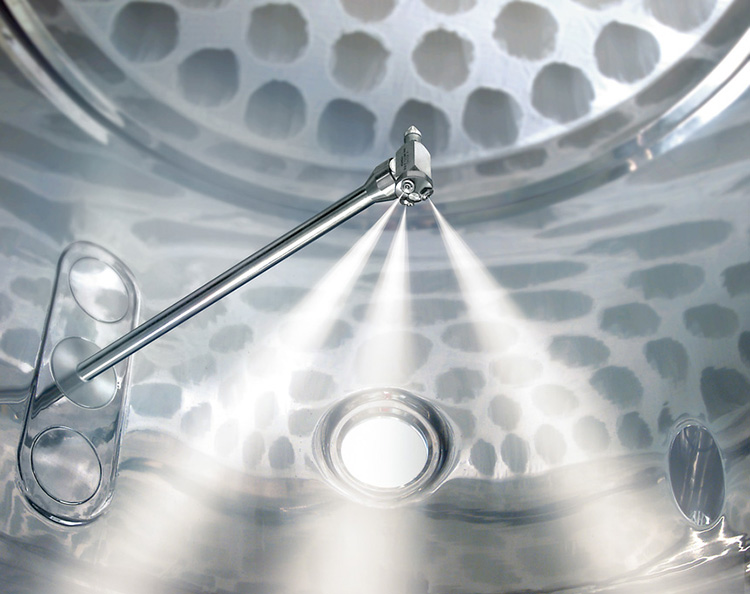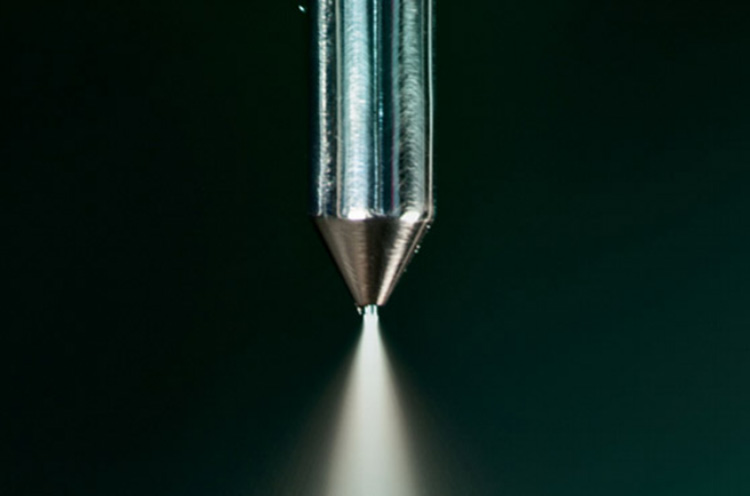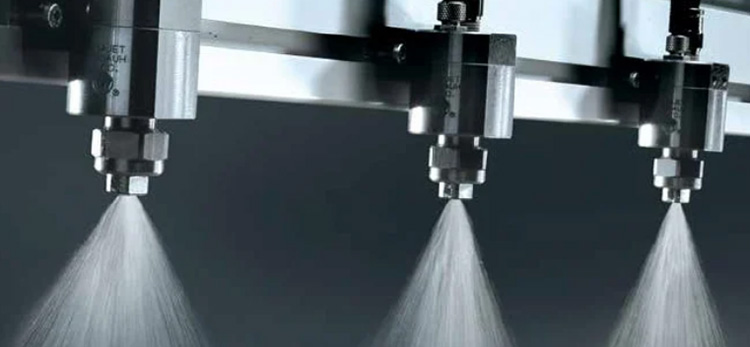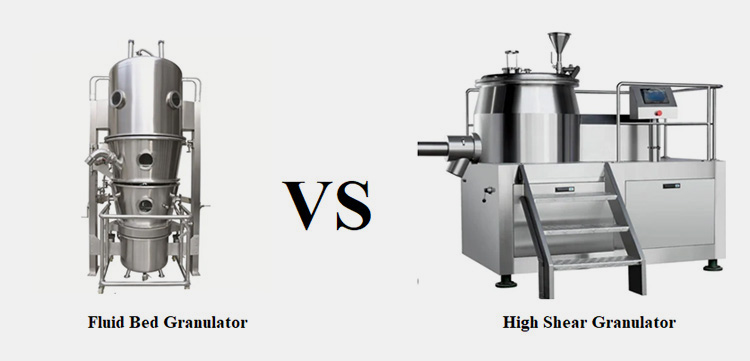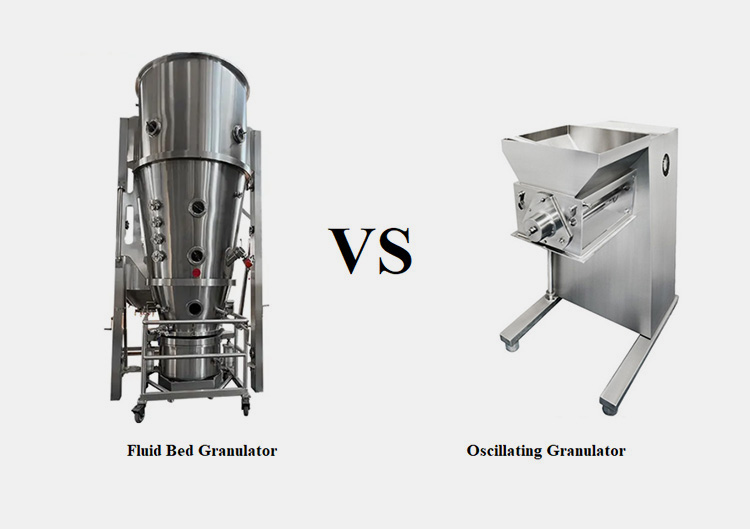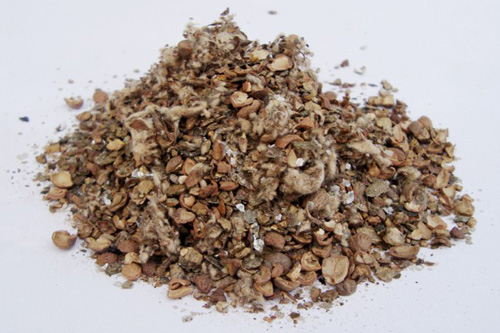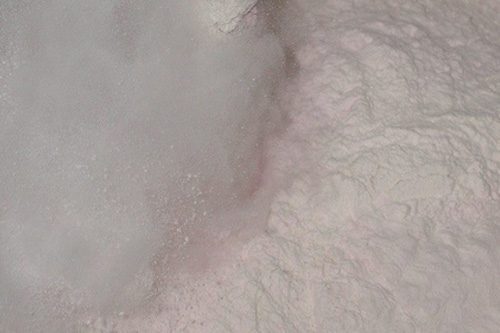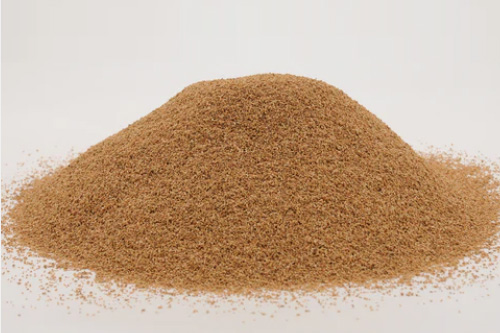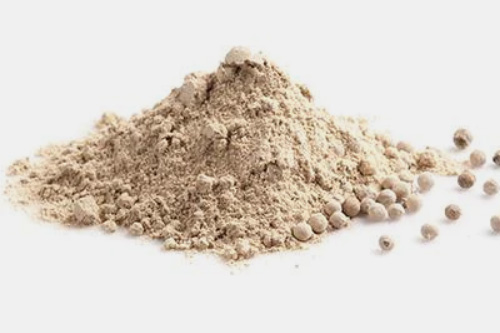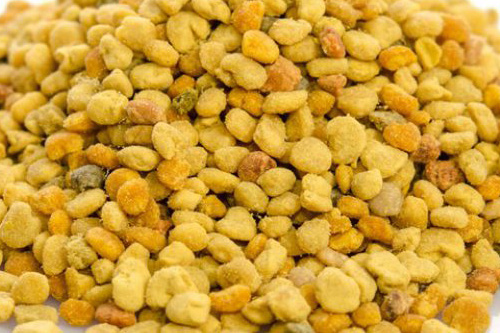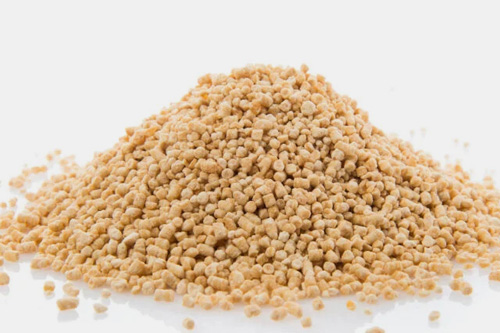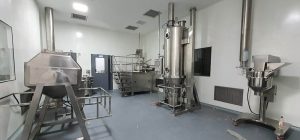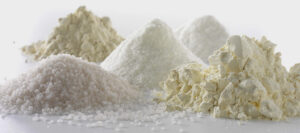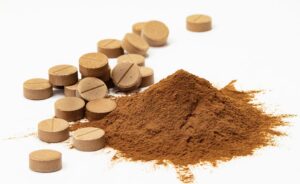Mixing, granulating and drying could be completed in one machine
Adapt anti static filter bag,safe operation
Easy to load and unload materials
Want A Free Consultation
Pharma Food Chemical Powder Drying&Granulating Multi-function Fluid Bed granulator
AIPAK FLseries fluid bed granulator is an equipment used to reduce the moisture content of pharmaceutical powder and granules.The working principle of the fluidized bed dryer and granulator starts when hot air is introduced at high pressure through a perforated bed of moist solid particulates. The materials to be dried are placed in the drying bowl, which is then wheeled inside the fluid bed dryer. The wet solids are lifted from the bottom and suspended in a stream of air (fluidized state). In this state, the solids behave like a free-flowing boiling fluid.The flow rate and the operating temperature are adjusted through the control panel. Heat transfer is accomplished by direct contact between the wet solid and hot air. The vaporized liquid is exhausted away. The drying process in fluidized bed drying reduces the drying time in comparison to using drying ovens by approximately twenty times. This is because the entire product surface area is exposed to the high-volume air stream. In addition, the fluid bed dryer provides controlled and uniform drying conditions compared to the uneven drying in trays.
FL series Fluid Bed Granulator Working Principle
The powder granule in vessel(fluid bed)appears in the state of fluidization.It is preheated and mixed with clean and heated air.At the same time the solution of adhesive is sprayed into the container.It makes the particles become granulating that contains adhesive.Being of unceasing dry through hot air,the moisture in the granulating is evaporated.The process is carried out continuously.Finally it forms ideal,uniform and porous granules.
FL series Fluid Bed Granulator Product Details
FL series Fluid Bed Granulator Applications
Pharmaceutical industry:tablet capsule,low sugar or no sugar granule of Chinese traditional medicine.
Foodstuff:cocoa,coffee,milk powder,juice of granulate,flavoring and so on.
Other industries:pesticide,feed,chemical fertilizer,pigment,dyestuff and so on.
Drying:powder or granule state of wet material.
Coating:protection layer,color,controlled release,film,or bowels solved coating of granules and pills.
FEATURE
- The Fluidized bed dryer and granulating is very efficient.
- The solids are in fluid state, ensuring perfect mixing.
- Maximum surface area is exposed to hot air.
- Provides a high degree of heat and mass transfer.
- Less retention time.
- Fluidized bed dryers and granulator are automatic.
- FBD can run uninterrupted once the operation starts.
- No moving parts in contact with the material, hence minimum maintenance.
- Process flexibility.
- Lower operating costs.
- Lower initial capital expenditure.
- More reliability, less downtime.
- Lower maintenance costs.
DATA SHEET
| ltem | Unit | type | ||||||||||
| 3 | 5 | 15 | 30 | 60 | 120 | 200 | 300 | 500 | 800-1000 | |||
| Container | Volume | L | 12 | 22 | 45 | 100 | 220 | 420 | 670 | 1000 | 1500 | By client |
| Diameter | mm | 300 | 400 | 550 | 700 | 1000 | 1200 | 1400 | 1600 | 1800 | ||
| Capablity | Min | Kg | 1.5 | 4 | 10 | 15 | 30 | 80 | 100 | 150 | 250 | |
| Max | Kg | 4.5 | 6 | 20 | 45 | 90 | 160 | 300 | 450 | 750 | ||
| Fan | Capacity | m/h | 1000 | 1200 | 1400 | 1800 | 3000 | 4500 | 6000 | 7000 | 8000 | |
| Pressure | mmH20 | 375 | 375 | 480 | 480 | 950 | 950 | 950 | 950 | 950 | ||
| Power | kw | 3 | 4 | 5.5 | 7.5 | 11 | 18.5 | 22 | 30 | 45 | ||
| Steam expendture | Kg/h | 15 | 23 | 42 | 70 | 141 | 211 | 282 | 366 | 451 | ||
| momrse dir enditure | m/min | 0.9 | 0.9 | 0.9 | 0.9 | 1.0 | 1.0 | 1.1 | 1.5 | 1.5 | ||
| Weight of the main body | Kg | 500 | 700 | 900 | 1000 | 1100 | 1300 | 1500 | 1800 | 2000 | ||
| Steam pressure | Mpa | 0.3-0.6 | ||||||||||
| Temperature | "C | (adjustable at the range from room temperature to 120"C) | ||||||||||
| Working time | min | (decidin accordance with te propleries of raw materials ) | ||||||||||
| Field | % | ≥99 | ||||||||||
| N0ise | dB(A) | N0ise≤75dB(A)(when installation,mian machine is separated from fan) | ||||||||||
| Sizel(Lx WxH) | m | 10x0.6 | 12x0.7 | 125 09 16x1.1 | 185 1 4 | 22x1.65 | 2.34x 17 | 28x20 | 3x225 | |||
| x2.1 | x2.1 | x25 | x25 | x3 | x33 | x3.8 | x4.0 | x4.4 | ||||
CONTACT
Get in touch with an expert
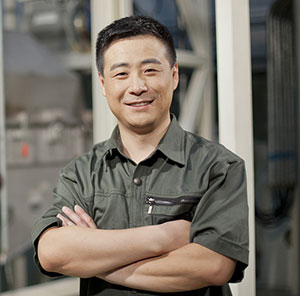
Andrew Yang
Engineer Director
Phone: +86 181 6426 8586
Fluid Bed Dryer Related Products
The Buyer's Guide
Fluid Bed Granulator: The Complete Buying Guide in 2024
Fluidization in a fluid bed granulator is like forming and plummeting waves.
A fluid bed granulator is a handy piece of equipment used for agglomeration, granulation, and coating. It conforms to new norms and is rapidly becoming a top-utilized machine for granulation. Several industries such as pharmaceutical, food, and chemical use the fluid bed granulator for transforming powdery feed into spherical granules.
Before buying a fluid bed granulator, you should read through this all-inclusive guide to learn about various aspects, features, and applications of these machines.
Let’s have an insight!
1.What is a Fluid Bed Granulator?
As the name indicates, a fluid bed granulator carries out granulation in a fluid bed that is equipped with spray nozzles. It is all-in-one equipment proficient in carrying out mixing, granulation, and drying of materials for improving the properties of feed as well as its solubility.
A fluid bed granulator is mostly used for agglomeration purposes of powders and also aids in the adhesivity of powders through the addition of binders.
These are the one-pot instrument with every step from the loading of materials to granulation, the addition of binder, and drying performed in the same equipment. The fluid bed granulator evenly mixes materials, sprays the binder solution on the material mixture, homogenously blends both binders and feed materials, and finally dries the agglomerated particles with hot air.
2.What are the Industrial Uses of a Fluid Bed Granulator?
Fluid bed granulator has wide-ranging applications in different industries because of its flexibility and good-quality granulation advantage. Some important industrial uses of a fluid bed granulator are detailed below:
Pharmaceutical Industry
Fluid bed granulator is the best equipment for granulation and hence is commonly used in the pharmaceutical industry. It performs out wet granulation of active pharmaceutical ingredients. It boosts the characteristics of powders for tablet compression and is essential in good tableting.
Nutraceutical Industry
For the formation of vitamin, mineral, and supplement granular formulations, a fluid bed granulator is employed in the nutraceutical industry. This machine uniformly mixes granulating fluids with supplement powders.
Food Industry
In the food industry, fluid bed granulator agglomerates granular food particles such as coca, milk powders, sugars, flour, spices, etc. It dries damp food powders using air. Moreover, it is used in the manufacturing of sauces, soups, baby food, etc. since it increases the dissolution and dispersibility of products.
Cosmetic Industry
For the production of different types of granular cosmetic products such as wax granules, a fluid bed granulator is used in the cosmetic industry. It is often employed during the formulation of perfumes, foundations, eyeliners, face powders, oils, scents, etc.
Feed Industry
This industry involves the production of granular feed particles thus fluid bed granulator helps in mixing different feed particles. A fluid bed granulator is mainly employed in the agglomeration of fodder granules.
Chemical Industry
A fluid bed granulator is employed for boosting particle characteristics such as fluidity, dispersion, and, structure in the chemical industry. It is used in the granulation of fertilizer, pigments, dyes, additives, cellulose, detergents, etc.
3.What are the Advantages of a Fluid Bed Granulator?
A fluid bed granulator is a robust, versatile, and flexible machine bringing a diverse range of benefits to industries. Some of these advantages of a fluid bed granulator are:
Low Cost
Mixing, agglomerating, and drying processes are performed in a single machine thus fluid bed granulator saves the need of buying more equipment. Also, a fluid bed granulator consumes less energy. Hence, it is a cost-cutting system.
Low Space Requirements
The fluid bed granulator is compact with a vertical footprint and thus is easily accommodated in small spaces.
Reproducible
The fluid bed granulator is a highly reproducible system because it controls the rate at which air and binder solution is added to the material bed. These two parameters determine the final granular size of products.
High Heat Transfer
Usually, warm air is introduced from the bottom of the machine which rises the material feed upward resulting in an increase in the surface area for heat transfer. The heat transfer is 2 to 6 times higher than normal tray dryers.
Lower Dust Generation
This machine is equipped with an anti-static filter bag that decreases the generation of dust during the wet granulation process. Therefore, fluid bed granulator poses no risk to the workforce and environmental safety.
Fast Drying
By using a fluid bed granulator fast, uniform, and homogenous drying is achieved. Moreover, there are no dead zones during drying since granules are dried during their suspension instead of the bed surface.
4.What Are the Basic Parts of a Fluid Bed Granulator?
A fluid bed granulator is a handy machine comprising different parts that play a vital role in the granulation and agglomeration of powders. Some of these parts are detailed below:
Fluidizing Chamber
It is the main part of the fluid bed granulator and is cylindrical. Processes like granulation and drying take place in this part. It is made up of three different chambers which are:
Top Filter Chamber
This chamber is mainly equipped with filter bags that filter the outgoing air and remove dust particles or impurities from exhaust air.
Expansion Chamber
It is the middle part of the fluidizing tower. In this chamber, particles flow up and down under the influence of airflow and gravity respectively. This reciprocal movement of powder materials offers better fluidization. Granules are formed in an expansion chamber by mixing powders with granulating fluid.
Product Chamber or Bowl
The products for granulation are loaded inside this chamber, present at the base of the fluidizing tower. Air is introduced from the bottom of this chamber to the fluid bed.
Air Preparatory Unit
This is also referred to as an air handling unit and consists of different components-prefiltering air unit, air heaters, dehumidifier, re-humidifier, and, HEPA filters. This part is essential in removing impurities from the fluidizing air. Moreover, this system maintains the humidity and temperature of the air to an optimal level.
Air Plenum
Air enters the fluidizing chamber from the bottom of the product contain via an inlet air plenum. This plenum is connected to the air preparatory unit.
Air Distributor Plate
It is fixed at the bottom of the product bowl. A distributor plate helps in the even distribution of air in a fluidizing bed. A screen with a mesh size of 60-325 is present at the upper side of the air distributor and its function is to keep materials in the product bowl.
Spray Nozzle
It is an orifice through which liquid binders are forced out or atomized using compressed air or pressure. The spray nozzle breaks the liquids into smaller droplets to increase the surface area of the liquid. It is fixed at the top side of the expansion chamber.
Bag Filters
They are commonly used filter systems for processing exhaust air and are available in single or double configurations. Bag filters are made of nylon, polyester, or polypropylene. They are also used as anti-static devices to dispel static charges from material particles.
Exhaust Blower or Fan
After leaving the exhaust filters, air goes to the exhaust fan which is usually present on the outlet side. The function of this fan is to maintain low pressure in a fluid bed granulator than in the surroundings.
Granulating Fluid Delivery Systems
These parts deliver binder solutions to spray nozzles and are operated under low-pressure settings. Granulating fluid delivery systems are equipped with peristaltic pumps that transport the fluids to spray nozzles at a controlled rate.
Control System
The control systems in a fluid bed granulator are usually conventional pneumatic analog control equipment or modern PLC units. These parts store data recipes for reproducible batches but also record and print process information.
5.How Does a Fluid Bed Granulator Work?
Working of fluid bed granulator consists of three steps which are detailed below:
Fluidization of Materials
First materials are loaded inside the product bowl. After loading of materials, the air is heated to the required temperature and then filtered using filter systems. The heating and filtration of the air are performed before it enters the fluid bed granulator.
Heated air is directed in the product bowl using inlet fans or pumps. As air pass through the air distribution plate, it will begin suspending powder particles. The airflow rate should be that bed particles exhibit the behavior of a fluid.
Addition of Binders and Granulation
After successful fluidization, the spray nozzle is generally positioned at the top of the expansion chamber, spray binders, or other granulating liquids on the surface of a fluidized bed of powders.
With the aid of granulating fluid, the powder particles collide with each other and also combine to form granules. Binders are continuously added to the powder bed till the granules of the required size are acquired.
Drying
It is an important step in a fluid bed granulator. Immediately after the formation of desired-sized granules, the spraying nozzles are switched off and hot air is circulated through the bed which efficiently dries the end granules.
Drying of granules usually begins with the evaporation of moisture from the exterior of the granules. Drying gradually extends to the interior till every granule is completely dried.
6.What Is the Classification of a Fluid Bed Granulator?
Fluid bed granulator is classified in different ways such:
Classification Based on Design
Based on the design, there are three kinds of fluid bed granulator systems available in the market. These types are:
Top Spray Fluid Bed Granulator
In this fluid bed granulator spray nozzles are located at the top of fluidizing chamber while the feed materials are filled inside the product bowl from the bottom. The binder solution is sprayed from the top onto the surface of the fluid bed containing suspended particles.
A top spray fluid bed granulator performs powder agglomeration and recrystallization. It improves the fluidity of the powders and also increases the density and surface area of powders.
Rotating Disk Fluid Bed Granulator
This type of fluid bed granulator can perform coating in addition to granulation. It utilizes a rotating disk located at the bottom end of the product chamber. The end of the disk is seated against the container wall. When the disk is raised, it creates a gap through which air flows.
Through the rotation of the disk materials, are carried upward, and spray nozzles are located tangentially in the chamber, spray binder and coating agents on material. A rotating disk fluid bed granulator creates dense and spherical granules.
Turbojet Fluid Bed Granulator
It has a circular shape blade that functions as an air distribution device. High-speed airflow is created when air passes through blade incisions in this fluid bed granulator. This airflow rotates the materials in an upward direction.
Pneumatic spray nozzles are used for dispersing binders and coaters onto the materials. A Turbojet fluid bed granulator is used both for granulation and coating purposes.
Classification based on Application
There are two categories of a fluid bed granulator when classified according to application. These types are detailed below:
Laboratory Fluid Bed Granulator
It is a small-scale laboratory or a pilot-scale fluid bed granulator. Laboratory fluid bed granulator is portable with a small desktop design and can be installed in small spaces. It has two interchangeable product bowls for processing different product volumes. It can process materials weighing about 50 grams to 2 kilograms.
Laboratory fluid bed granulator is mostly employed for conducting feasibility studies and used in research and development projects.
Industrial Fluid Bed Granulator
It is a large-capacity granulator ideal for processing large batches of products in industries such as pharmaceutical, food, chemical, etc. It has large headspace and is equipped with various accessories for convenient operation on a large scale. An industrial fluid bed granulator can process about 20 kilograms to 500 kilograms of materials.
Moreover, this machine has a 2 or 12-bar explosion-proof design with several advanced spray nozzles systems, large capacity bowls, and air handling systems for processing bulk loads of products. Industrial fluid bed granulator also has WIP and CIP systems for easier cleaning and maintenance.
7.What Are Different Nozzle Designs in a Fluid Bed Granulator?
Generally, a fluid bed granulator has one of four following different nozzle designs.
Pressure Nozzle
In this kind of nozzle, liquid disintegrates into smaller droplets on discharge via pressure. The kinetic energy provided by the pressure destabilize the binders which then break down into tiny drops.
Rotating Nozzle
The binder is loaded at the center on a rotary disc which is fitted before the opening of a nozzle. Centrifugal forces provided by the rotating disc force the fluids into atomized drops.
Airless Spray Nozzle
Granulating liquids are first separated into two streams and they are forced together at the nozzle opening, where upon impact they generate small droplets.
Gas Atomizing Nozzle
These are also called two-nozzle systems. Fluid and compressed air flow from different nozzles and upon impact the compressed air forces liquids into smaller drops. These nozzle designs are widely used in a fluid bed granulator.
8.What Is the Working Mechanism of a Fluid Bed Granulator?
The working mechanism of a fluid bed granulator is divided into three main processes which are:
Wetting or Nucleation
Wetting is the first step in the granulation process. This process is characterized by the addition of binder via a spray nozzle in a fluid bed granulator. Binder incorporation wet powders and then they start agglomerating. The binder and powder form initial nuclei or seeds.
When the particles come in contact with each other they stick together due to the formation of a liquid bridge.
Growth and Coalescence
When powder materials are dispersed in a fluid bed, they collide with each and join together. This behavior is called growth. However, if two large granules combine then this phenomenon is called coalescence.
The growth process starts immediately after the incorporation of the binder into fluidized powders. It occurs simultaneously with nucleation.
Breakage and Attrition
Breakage is referred to as the breakdown of wet granules into smaller pieces in a fluid bed granulator. Attrition is a process in which dried granules fracture into fragments during drying.
9.What Are the Working Parameters of a Fluid Bed Granulator?
Various factors affect the performance of a fluid bed granulator; however, these factors are broadly classified into two types:
Granulation Process Parameters
Numerous parameters affect the efficiency of the granulation process in a fluid bed granulator. These factors are discussed one by one below:
Starting Material
Starting materials must be properly mixed before loading into a fluid bed granulator as it may otherwise increase non-uniformity in granule sizes and structures.
Moreover, the characteristics of starting materials also impact the choice of binder agent for instance for hydrophilic materials, the binder should be hydrophobic for optimized granulation.
Nozzle Position
It should be set according to the level of feed in the granulating bowl. The position of a nozzle should be such that the binder solution should properly wet the materials when it is sprayed from the nozzle.
Spray should fully cover the surface of the fluid bed. Otherwise, there may be non-uniformity in resultant granules.
Spray Rate and Pressure
These two factors play a significant role in agglomeration and granulation of materials. Spray rate and pressure must be selected according to the characteristics of products because inadequate spray rate and pressure will lower the fluidity of granules and resultant granules will be of poor quality.
Larger-sized granules are formed when the spray rate is high that is exceeding one liter per second.
Binder
For successful granulation in the fluid bed granulator, it is necessary to choose the right type of binder. Mainly aqueous binder solutions like water are mostly used with a fluid bed granulator because there is a chance of explosion with organic binder agents. A good binder agent should have superior wet adhesion characteristics and excellent spreadability.
Furthermore, it should right concentration for obtaining granules of the required sizes and strength. Binder agents should not have high temperatures as they may dry before reaching the powder bed.
Drying Process Parameters
The efficiency of the drying process in a fluid bed granulator is depended upon the combination of several factors. These parameters include:
Temperature
The drying rate in a fluid bed granulator is enhanced with the increase in inlet air temperature. However, caution should be applied when increasing the temperature of the air as thermosensitive products may degrade at high temperatures.
Humidity
There is an inverse relation between humidity and drying rate. The dehumidified air is highly recommended for quick drying. If there is a low concentration of vapors in the air it will boost the drying rate.
Air Flow Rate
The airflow rate should be optimal that is not too fast or slow for efficient drying of granules. Increasing the air flow rate also increases the drying cost but on the other hand, a slower air flow rate will decrease the drying rate.
Characteristics of Products
Characteristics of feed such as high moisture content in the starting materials will increase the drying time. Moreover, the choice of batch size should be based on the feasibility of the fluid bed granulator and granulation process conditions.
10.What Is the Difference Between a Fluid Bed Granulator and a High Shear Granulator?
Both a fluid bed granulator and a high-shear granulator are used for wet granulation in industries. But these machines are hugely different from one another. Some of these differences are detailed below:
| Fluid Bed Granulator | High Shear Granulator |
| The fluid bed granulator has a fluidized bed, spray nozzles, distributor plate, expansion chamber, and filter bag. | This machine consists of an impeller, chopper, mixing bowl, spray nozzle, hopper, and discharge port. |
| It has a vertical configuration and can be installed in minimal space. | It has a horizontal configuration and requires more space for installation. |
| It is a one-pot processing machine as both granulation and drying are performed in the same machine. | It requires a fluid bed dryer for drying after the granulation of products. |
| It is less labor intensive. | It is more labor intensive. |
| Fluid bed granulator produces low-density, porous, and irregular shape granules. | High-shear granulator produces high-density spherical granules. |
| Less amount of binder solution is required in the fluid bed granulator. | High shear granulator uses a large amount of binding agent. |
| It has a low operational cost. | It has high operational costs since it requires a greater number of accessories and other equipment. |
11.What Are the Differences Between a Fluid Bed Granulator and an Oscillating Granulator?
A Fluid bed granulator and an oscillating granulator are widely different machines and are used for different applications. A few of these differences include:
| Fluid Bed Granulator | Oscillating Granulator |
| This machine carries out wet granulation, agglomeration, and drying of wet granules. | It performs dry granulation and is mostly involved in size reduction. |
| The fluid bed granulator is comprised of a fluid bed column with different chambers, spray nozzles, air distributor plates, and filter bags. | The oscillating granulator has one rotor, screen mesh, and a hopper. |
| The materials are fluidized with the aid of air in a fluid bed and then binders are sprayed with the spraying nozzles. After spraying, materials are dried with inlet air. | Materials fall from the hopper onto the rotor blades and are fragmented into smaller pieces with rotors. After their size reduction, these products are discharged from the sieve mesh. |
| This machine has complicated construction with many parts. | It has a simple design with fewer parts. |
| It is more labor intensive. | It is quite easier to operate. |
| The fluid bed granulator is difficult to install and requires more maintenance. | The oscillating granulator is easier to install and needs minimal maintenance. |
12.How to Troubleshoot a Fluid Bed Granulator?
Problems can arise in a fluid bed granulator but if dealt with correctly, it can save expenses and time. Here are some tips for troubleshooting common problems in a fluid bed granulator.
| Problem | Cause | Solution |
| Huge Quantity of Coarse Granules
|
The spraying rate of binder is quite high
A low temperature of drying air The level of the nozzle is low A binder with a stronger concentration is used Low fluidifying velocity |
Reduce the spraying rate of binder
Adjust the temperature of an inlet air Fix the position of the nozzle Use less concentrated binder Adjust the fluidization velocity |
| Poor Fluidization
|
Unclean air distributor having a buildup of debris
High level or amount of products in discharge container Minimal air velocity Clogged exhaust The pore size of the exhaust is small Inadequate pressure-drop of processor fan |
Clean the air distributor with a brush and blower
Unload the products from the discharge bin Increase the air velocity Properly clean the exhaust before use Use exhaust of adequate pore size Adjust the pressure drop of the processor fan |
| Excessive Fine in Granules
|
Inadequate binder addition
High rate of air flow or fluidized velocity The spraying rate of binder is very low High pressure of atomized air Incorporation of weak binder in granules |
Increase the quantity of binder
Adjust the air flow rate or fluidized velocity Adjust the spraying rate of the binder as per the requirement The lower pressure of atomized air Use a binder of appropriate concentration |
| Inconsistent Quantity of Moisture in Products
|
Uncalibrated or defective temperature sensor
Inadequate particle fluidization Humidity in surroundings |
Calibrate or repair temperature sensor
Adjust particle fluidization Reduce the humidity of the surrounding air |
| Low Product Yield
|
Inadequate shaking of the filter bag at the end of the operation
Sticking of products to the expansion chamber The inadequate pore size of the exhaust Uneven screen orifice of the air distributor |
Properly shake the filter bag at the end of the operation
Reduce moisture content of granules Use exhaust with the right pore size Adjust the coarseness of the air distributor screen according to the requirement. |
| Non-Uniform Granules
|
Less spraying time
Lumpy feed Poor Filter shaking Inadequate mixing of product for granulation |
Increase spraying time
De-lump feed before granulation Increase filter shaking Properly mix the product before granulation |
Conclusion
Fluid bed granulator is versatile equipment and is gaining traction among pharmaceutical, nutraceutical, food, and chemical sectors. It is one pot machine capable of performing both granulation and drying thus there is no need for different accessories and equipment with a fluid bed granulator. Moreover, with a high heat transfer rate, drying times are reduced in this equipment. If you are interested in learning more about a fluid bed granulator you are more than welcome to contact our customer care.
Fluid Bed Granulator Related Posts
CONTACT US
Tell us your raw material and project budget to get quotations within 24 hours.
WhatsApp Us: +86 189 7157 0951
